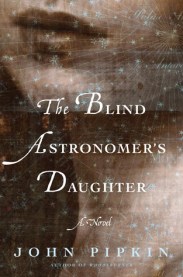I’ve been reading about the delights and dangers of viewing a solar eclipse. NASA’s website says that “a total solar eclipse is probably the most spectacular astronomical event that most people will experience in their lives.” It also states that
“most individuals who sustain eclipse-related eye injuries are children and young adults.”
LiveScience.com adds this reminder: “Looking directly at the sun, even when it is partially covered by the moon, can cause serious eye damage or blindness. NEVER look at a partial solar eclipse without proper eye protection.”
Protect eyes from sunspots, headaches, afterimages, temporary blindness, and permanent damage. Pick up a pair of eclipse-viewing glasses from the Children’s Library while supplies last, starting August 14, and ENJOY RESPONSIBLY!
(On a related note…)
The Blind Astronomer’s Daughter, by John Pipkin. In late-eighteenth-century Ireland, accidental stargazer Caroline Ainsworth often assisted her father with his observations, in pursuit of an unknown planet. Now, gone blind from staring at the sun, he has chosen death over a darkened life.
This is a novel of the obsessions of the age: scientific inquiry, geographic discovery, political reformation, but above all, astronomy, the mapping of the solar system and beyond. It is a novel of the quest for knowledge and for human connection — rich, far-reaching, and unforgettable.

